100 Ways to Check for Student Understanding in Real Time
Checking for student understanding isn’t just about evaluating knowledge—it’s about building a bridge between teaching and learning. Using effective ways to check for student understanding ensures that concepts are truly understood and retained. When students feel supported and their progress is monitored thoughtfully, learning becomes more meaningful and impactful.
Quick and effective comprehension checks don’t have to be complicated. Research shows that simple ways to check for student understanding, such as formative assessments, can boost retention by up to 34%. For example, techniques like “exit tickets” or “one-minute reflections” provide real-time insights while encouraging students to reflect on what they’ve learned. Tools like quick polls or short quizzes can also highlight learning gaps without overwhelming learners.
Active recall is another powerful strategy. Studies reveal that actively retrieving information from memory strengthens long-term retention, making it a cornerstone of effective ways to check for student understanding. Activities like think-pair-share or summarizing a lesson in a single sentence are quick, impactful methods supported by evidence.
This article offers 100 practical and accessible ways to check for student understanding. Each strategy is adaptable for use in classrooms, online spaces, or blended learning environments, ensuring you can support growth, address gaps, and inspire confidence in learners.
Why Teachers Need Effective Ways to Check for Student Understanding
Regularly assessing student understanding helps teachers make informed decisions about their instruction. It highlights areas where students excel and identifies concepts that require more focus. With these insights, teachers can adjust their teaching methods, ensuring every student has the opportunity to succeed.
Simple Ways to Check for Student Understanding During Lessons
- Quick Polls or Surveys: Use digital tools like Google Forms or apps like Mentimeter to ask students quick, real-time questions.
- Think-Pair-Share Activities: Encourage students to share ideas with a partner and then with the class, fostering collaboration while assessing comprehension.
Exit Tickets: Ask students to write one thing they learned or a question they still have before leaving class.
Interactive Ways to Check for Student Understanding
-
- Classroom Discussions: Engage students in group discussions to assess how well they can explain concepts in their own words.
- Hands-On Demonstrations: Ask students to demonstrate a process or apply a concept in real time.
- Classroom Discussions: Engage students in group discussions to assess how well they can explain concepts in their own words.
- Digital Tools and Games: Use platforms like Kahoot or Quizizz to gamify learning and gather instant feedback.
Adapting Ways to Check for Student Understanding in Online Learning
In virtual settings, checking for understanding requires creativity. Tools like breakout rooms, interactive whiteboards, and discussion boards make it easier to gauge comprehension. Quizzes embedded in learning platforms or asynchronous discussions can also provide valuable feedback for both students and teachers.
1. Mind Maps
- Visualize relationships between ideas.
- Examples:
- “Draw a central idea and branch out related concepts.”
- “Create a web showing how this topic connects to others.”
2. KWL Charts
- What do you Know, Want to know, and Learned?
- Sentence Stems:
- “I already know that…”
- “I want to learn more about…”
- “Now I understand that…”
3. Entrance Tickets
- Brief question at the beginning to assess prior knowledge.
4. Exit Tickets
- Quick reflections at the end of a lesson.
- Examples:
- “Write down one thing you learned today.”
- “What question do you still have?”
5. Think-Pair-Share
- Think individually, discuss in pairs, and share with the group.
- Sentence Stem:
- “I think that…”
6. Reflection Journals
- Students record their thoughts and insights.
- Example Prompts:
- “Today, I learned that…”
- “I’m still confused about…”
7. Concept Maps
- Visually organize and connect ideas.
- Instructions:
- Place key concept in the center and add related points.
8. Graphic Organizers
- Visual frameworks to organize thoughts.
- Types: Venn Diagrams, Flow Charts, T-Charts.
- Sentence Stems:
- “In this category, I noticed…”
9. Peer Teaching
- Learners explain concepts to one another.
- Prompt:
- “Teach your partner how to…”
10. Summarizing
- Briefly describe the main points.
- Sentence Stem:
- “In summary, the main idea is…”
11. Think-Alouds
- Verbalize thought processes.
- Example:
- “I’m thinking this because…”
12. Questioning Strategies
- Use open-ended questions to prompt deeper thinking.
- Examples:
- “Why do you think this happened?”
- “What would you have done differently?”
13. Three-Minute Pause
- Brief pause for learners to reflect.
- Prompts:
- “The main thing I learned is…”
14. Socratic Seminars
- Definition: A Socratic Seminar is a structured, student-led discussion focused on deep analysis of a specific topic or text. Inspired by Socratic questioning, it encourages critical thinking, dialogue, and understanding through open-ended questioning and respectful debate.
- Purpose: Enhances comprehension and insight by allowing students to explore multiple perspectives, develop arguments, and analyze complex ideas in a collaborative setting.
- Structure:
- Preparation: Students read the text or review the topic in advance, often taking notes or highlighting key points to discuss.
- Circle Setup: Participants sit in a circle to encourage open dialogue and equal participation.
- Facilitator: The teacher or a chosen student moderates, guiding discussion without dominating.
- Question Types:
- Open-Ended: Prompts that encourage broad thinking.
- Example: “What do you think the author meant by…?”
- Clarification: Seeks further explanation.
- Example: “Can you explain why you think that?”
- Challenge: Questions ideas for deeper analysis.
- Example: “Why do you disagree with that perspective?”
- Open-Ended: Prompts that encourage broad thinking.
- Benefits:
- Develops Critical Thinking: Promotes analysis, reasoning, and logical argumentation.
- Builds Communication Skills: Enhances listening and respectful dialogue.
- Encourages Engagement: Fosters active participation and curiosity.
15. Reciprocal Teaching
- A structured method where students take turns leading a discussion on a reading passage or topic, involving summarizing, questioning, clarifying, and predicting.
- Process:
- Summarize: One student summarizes the key points of the passage.
- Sentence Stem: “The main idea of this section is…”
- Summarize: One student summarizes the key points of the passage.
- Question: Another student poses questions about unclear points.
- Sentence Stem: “What do you think the author meant by…?”
- Clarify: A third student clarifies confusing parts, using additional resources if needed.
- Sentence Stem: “This part means… because…”
- Predict: The group then discusses what might happen next or how the information could apply to future learning.
- Sentence Stem: “Based on what we read, I think…”
16. Quizzes
- Brief assessments to measure retention.
- Tip:
- Use formative quizzes to guide instruction.
17. Self-Assessments
- Reflect on understanding and progress.
- Sentence Stem:
- “I feel confident about… but need more help with…”
18. Thumbs Up, Thumbs Down
- Visual indicator of understanding.
19. Two-Column Notes
- Write notes in one column and reflections in the other.
20. Jigsaw Activity
- Definition: A Jigsaw Activity is a cooperative learning strategy where each student becomes an “expert” on one part of a larger topic and then teaches it to their peers. This approach promotes collaboration and accountability, as each learner’s understanding contributes to the group’s overall comprehension.
- Purpose: Builds teamwork and allows for in-depth exploration of complex topics by breaking them down into manageable parts.
- Steps:
- Divide: Split the topic into sections, assigning one part to each student or small group.
- Research: Each “expert” group studies their assigned section and prepares to teach it to their peers.
- Teach: Students regroup to share their insights, piecing together a full understanding of the topic.
- Examples of Use:
- History: Divide students to cover different historical events or figures within a time period.
- Science: Assign sections of a scientific process, like the water cycle or cell functions.
- Roles in the Jigsaw:
- Note-Taker: Records key points to share with the group.
- Questioner: Prepares questions to prompt discussion.
- Presenter: Teaches their section to the others.
- Benefits:
- Encourages Active Learning: Each student takes ownership of a part of the learning process.
- Fosters Collaboration: Builds interpersonal skills through teamwork and peer teaching.
- Improves Retention: Teaching others reinforces the student’s own understanding.
Socratic Seminar
21. Role-Playing
- Act out scenarios related to the content.
22. Student Portfolios
- Collect student work over time to show growth.
23. Fishbowl Discussions
- Definition: A Fishbowl Discussion is a group conversation format where a small group of students (the “fishbowl”) discusses a topic while the rest of the class observes. The discussion flows as students in the outer circle listen, and roles switch to include new participants.
- Purpose: Encourages active listening, structured dialogue, and thoughtful participation. Observers learn by listening and reflecting, while participants develop communication skills in a focused setting.
- Structure:
- Inner Circle (Fishbowl): A small group discusses the topic, taking turns sharing thoughts.
- Outer Circle (Observers): Observers listen carefully and take notes, sometimes preparing questions.
- Rotation: After a set time, roles switch so all students get a turn in the “fishbowl.”
- Preparation:
- Pre-Reading: Students review materials or a guiding question beforehand.
- Roles: Assign specific roles such as facilitator, note-taker, or summarizer to support a balanced discussion.
- Types of Prompts:
- Reflective: “What part of the reading resonated most with you?”
- Analytical: “How does this idea relate to current events or issues?”
- Benefits:
- Builds Critical Thinking: Encourages students to analyze and connect ideas in real-time.
- Promotes Respectful Dialogue: Fosters an environment of listening, turn-taking, and respect for diverse viewpoints.
- Improves Public Speaking: Students gain confidence in sharing ideas within a structured setting.
24. Analogy Prompts
- Connect new knowledge with known concepts.
- Example:
- “Learning this is like…”
25. One-Sentence Summary
- Summarize the main idea in one sentence.
26. Double-Entry Journal
- Definition: A Double-Entry Journal is a note-taking method where students divide their page into two columns—one for notes or quotes from the material, and the other for their personal reflections, reactions, or questions. This approach helps learners engage deeply with the content and fosters critical thinking.
- Purpose: Encourages active reading and reflection by connecting content directly to the learner’s thoughts, questions, and interpretations.
- Structure:
- Left Column: Reserved for direct quotes, key points, or specific details from the text.
- Example Entry: “The main character chose to leave because…”
- Right Column: For personal reactions, interpretations, or questions about the notes.
- Example Reflection: “This choice reminds me of…”
- Left Column: Reserved for direct quotes, key points, or specific details from the text.
- How to Use:
- Prompted Reflection: Provide guiding questions to encourage deeper thinking, like “Why does this stand out to you?” or “What does this remind you of?”
- Follow-Up Discussion: Use journals as a basis for class discussion or group sharing.
- Benefits:
- Encourages Critical Analysis: Students go beyond summarizing by analyzing and connecting ideas.
- Enhances Comprehension: Reflecting in real-time helps reinforce and deepen understanding.
- Promotes Personal Connections: Links content with personal experience, making learning more meaningful.
27. Gallery Walks
- Post work around the room for a viewing.
28. Four Corners
- Definition: The Four Corners strategy is an interactive activity where each corner of the room is labeled with a response (e.g., Strongly Agree, Agree, Disagree, Strongly Disagree). Students move to the corner that represents their opinion or understanding of a question or statement, promoting physical movement and active discussion.
- Purpose: Encourages critical thinking, debate, and listening to differing perspectives, allowing students to articulate and defend their positions.
- How to Use:
- Pose a Statement or Question: Ask a question or make a statement relevant to the lesson.
- Example: “Homework should be optional for all students.”
- Assign Corners: Label each corner with a response (e.g., Agree, Disagree, Strongly Agree, Strongly Disagree).
- Student Movement: Students move to the corner that best represents their view, then discuss with others in their group.
- Whole-Class Debrief: After group discussions, have a representative from each corner share key points.
- Pose a Statement or Question: Ask a question or make a statement relevant to the lesson.
- Types of Prompts:
- Opinion Statements: “Technology does more harm than good.”
- Hypothetical Scenarios: “If you could travel back in time, would you choose the past 100 years or the next 100 years?”
- Benefits:
- Fosters Engagement: Physical movement keeps energy high and breaks up routine.
- Builds Persuasive Skills: Students defend their stance, honing argumentation.
- Promotes Respect for Diverse Views: Encourages listening to and understanding different perspectives.
What’s the Difference Between “Four Corners” and “Question Corners“?
- Four Corners:
- Purpose: Gauge opinions on a specific statement, with choices typically on a scale (e.g., Strongly Agree to Strongly Disagree).
- Focus: Exploring personal beliefs and developing argumentation skills.
- Process: Students move to express their stance, then discuss in like-minded groups.
- Question Corners:
- Purpose: Encourage students to pose questions related to a lesson, with each corner representing a different type of question (e.g., Clarification, Challenge, Connection).
- Focus: Framing thoughtful questions and engaging in inquiry-based learning.
- Process: Students move to the corner that best matches their question type, then discuss with peers to deepen understanding.
29. Storytelling
- Share knowledge through narratives.
30. Quick Writes
- Short, timed responses to a question or prompt.
31. Visual Summaries
- Summarize concepts with visuals, like drawing a scene.
32. Think, Write, Share
- Think, write thoughts down, then share with the group.
33. Open-Ended Questions
- Encourage complex answers.
- Examples:
- “What might happen if…?”
34. Diagrams
- Draw processes or systems.
35. Word Clouds
- Definition: A Word Cloud is a visual representation of text where frequently mentioned words appear larger and bolder, highlighting key themes and concepts. This method visually emphasizes the most important terms or ideas from a text, discussion, or lecture.
- Purpose: Provides a quick snapshot of major themes, helps identify key concepts, and engages visual learners by summarizing information in an impactful way.
- How to Create:
- Gather Text: Use student notes, discussion transcripts, or key vocabulary from a lesson.
- Choose a Tool: Create word clouds easily with tools like Wordle, Tagxedo, or Canva.
- Interpret: Display the word cloud, encouraging students to discuss why certain words are prominent.
- Examples of Use:
- Before Reading: Create a word cloud of essential vocabulary for students to preview key concepts.
- During Discussion: Generate a cloud based on students’ responses to a question, highlighting common themes.
- After Reading: Summarize a text to see what ideas were most impactful.
- Benefits:
- Encourages Engagement: Visual format captures attention and makes learning memorable.
- Reinforces Key Ideas: Frequent terms show students what’s important at a glance.
- Promotes Vocabulary Building: Highlights critical terms to reinforce language development.
36. Interview a Partner
- Ask a partner to explain their understanding.
37. Class Polls
- Definition: Class polls are quick, informal surveys that gather students’ opinions, understanding, or feedback on a topic. They provide instant data and insights, helping teachers gauge comprehension or initiate discussions.
- Purpose: Engage all students in a non-intimidating way, assess understanding on the spot, and gather diverse perspectives to shape future instruction.
- How to Use:
- Opinion Check: Ask students for their stance on a topic to spark discussion.
- Example: “Do you think technology improves learning? Yes or No.”
- Understanding Assessment: Gauge comprehension of a concept or lesson.
- Example: “How confident are you about today’s material? (1 – Not at all, 5 – Very confident)”
- Interest Polls: Identify topics students want to explore further.
- Example: “Which topic should we review next? (A) Ecosystems (B) Cell Biology (C) Genetics”
- Opinion Check: Ask students for their stance on a topic to spark discussion.
- Benefits:
- Instant Feedback: Provides real-time insights into student comprehension.
- Increases Engagement: Interactive and anonymous format encourages honest responses.
- Supports Differentiation: Helps identify areas where more support is needed.
- Recommended Software:
- Google Forms: Simple to use for creating quick polls and collecting data.
- Mentimeter: Interactive, visual polls with live results.
- Poll Everywhere: Allows real-time responses and displays data instantly.
- Kahoot: Gamified polling and quizzes that engage students.
- Slido: Great for live polls, Q&As, and gathering anonymous feedback.
38. Discussion Circles
- Small group discussions on a focused topic.
39. Scaffolded Notes
- Structured notes with built-in prompts.
40. Digital Quizzes (Kahoot, Quizizz)
- Use online quiz tools for interactive checks.
41. Retelling
- Ask learners to retell the information in their own words.
42. Sticky Note Feedback
- Definition: Sticky Note Feedback is a quick and interactive method where learners write comments, questions, or reflections on sticky notes. These notes can be placed on specific parts of a text, poster, or around the room, allowing for flexible, visible participation.
- Purpose: Provides immediate, low-stakes feedback, fosters engagement, and enables students to interact with content in a tactile and visual way.
- How to Use:
- Exit Feedback: At the end of a lesson, students write one thing they learned, a question they still have, or something that interested them.
- Example: “One thing I’m curious about is…”
- Interactive Wall: Create a “Wonder Wall” or “Question Board” where students add sticky notes with questions or comments related to the topic.
- Peer Review: Students place sticky notes with constructive feedback or praise on their classmates’ work.
- Exit Feedback: At the end of a lesson, students write one thing they learned, a question they still have, or something that interested them.
- Types of Prompts:
- Reflection: “Write one thing you understand better now.”
- Question: “Write one thing you’re still confused about.”
- Opinion: “Write your reaction to today’s main idea.”
- Benefits:
- Encourages Participation: Simple, anonymous way for all students to share ideas.
- Builds Reflection Skills: Allows students to pause and consider their learning.
- Adaptable and Versatile: Works for group projects, individual feedback, or classroom discussions.
43. Write an Email
- Compose an email summarizing the concept.
44. Graphic Storyboards
- Plan concepts visually as in a comic strip.
45. Question Corners
- Definition: Question Corners is an interactive strategy where learners move to designated corners of the room to pose and discuss specific questions on a topic. Each corner represents a different theme, question type, or aspect of the lesson, encouraging exploration from multiple perspectives.
- Purpose: Promotes active learning and helps students engage deeply with content by framing questions, sharing insights, and discussing ideas in a structured setting.
- How to Set Up:
- Assign Corners: Label each corner with a theme or question type, such as “Clarification,” “Challenge,” “Connection,” and “Application.”
- Pose a Question: Students think of questions related to the lesson that fit each corner’s focus.
- Rotate and Discuss: Learners move to a corner that aligns with their question and discuss with peers in small groups.
- Examples of Question Types:
- Clarification Corner: Questions to clarify confusing concepts.
- Example: “I didn’t understand… Could someone explain this?”
- Challenge Corner: Questions that challenge or debate ideas.
- Example: “Why is this approach better than another?”
- Connection Corner: Questions that connect the material to real-life situations.
- Example: “How does this concept apply to everyday life?”
- Application Corner: Questions about how to use the information.
- Example: “How could we apply this to solve a real problem?”
- Clarification Corner: Questions to clarify confusing concepts.
- Benefits:
- Encourages Questioning Skills: Students practice forming meaningful questions.
- Promotes Collaboration: Small group discussions allow for idea-sharing and peer support.
- Increases Engagement: Physical movement and varied discussion topics keep energy high and maintain interest.
46. Class Discussions
- Open the floor for free discussion.
47. Reciprocal Questioning
- Students create questions for each other.
48. Learning Logs
- Reflective journaling for tracking understanding.
49. Fill in the Blanks
- Summaries with blanks to fill in key terms.
50. Error Analysis
- Analyze and correct mistakes.
51. Cause and Effect Diagrams
- Show relationships between events.
52. Matching Games
- Use matching activities for vocabulary or concepts.
53. Think-Write-Pair-Share
- A variation on Think-Pair-Share with written thoughts.
54. Paraphrasing
- Restate ideas in different words.
55. Prediction Chart
- Predict what will happen next.
56. Cornell Notes
- Definition: Cornell Notes is a structured note-taking system that divides a page into three sections—Notes, Cues, and Summary. This layout helps students capture main ideas, develop questions, and synthesize information, making it easier to review and retain content.
- Purpose: Encourages active listening, organized note-taking, and critical thinking by helping students process information systematically.
- Structure:
- Notes Section (Right Side): Main content, key points, and details are recorded here during the lesson or reading.
- Example Entry: “Key steps in the scientific method: observation, hypothesis, experiment, analysis.”
- Cues Section (Left Side): Keywords, questions, or prompts are added here after note-taking, reinforcing understanding and aiding in review.
- Example Prompt: “What is the purpose of each step in the scientific method?”
- Summary Section (Bottom): A brief summary of the content is written at the end, capturing main ideas in the student’s own words.
- Example Summary: “The scientific method involves systematic steps to test hypotheses and analyze results.”
- Notes Section (Right Side): Main content, key points, and details are recorded here during the lesson or reading.
- How to Use:
- During Class: Take notes in the Notes section, focusing on key points rather than full sentences.
- After Class: Add cues or questions in the Cues section, prompting reflection and potential discussion.
- Summarize: Write a concise summary at the bottom to reinforce memory and understanding.
- Benefits:
- Promotes Organization: Structured format helps students organize and recall information efficiently.
- Encourages Active Engagement: Cues and summaries require reflection on the material.
- Enhances Study Skills: Easy-to-review format makes it effective for exam preparation.
57. Sentence Frames
- Offer sentence starters to aid responses.
- Example:
- “I understand that…”
58. Pros and Cons List
- Compare advantages and disadvantages.
59. 3-2-1 Strategy
- Write 3 things learned, 2 questions, 1 interesting fact.
60. Debate
- Definition: A debate is a formal, structured argument where participants present opposing views on a specific topic, using evidence and reasoning to support their stance. It requires clear organization, critical thinking, and public speaking skills.
- Purpose: Enhances critical analysis, persuasive communication, and respectful disagreement by requiring students to build arguments and anticipate counterpoints.
- Structure:
- Opening Statements: Each side presents an initial argument, setting up their main points.
- Rebuttals: Participants address and counter arguments from the opposing side.
- Closing Statements: Each side summarizes their argument, highlighting their key points.
- Preparation:
- Research: Students gather facts, statistics, and examples to support their position.
- Practice: Students rehearse presenting and defending their arguments clearly and confidently.
- Types of Prompts:
- For/Against: “Should homework be banned in schools?”
- Agree/Disagree: “Social media does more harm than good.”
- Benefits:
- Builds Argumentation Skills: Develops ability to present evidence-based arguments.
- Promotes Critical Thinking: Encourages learners to analyze issues from multiple perspectives.
- Enhances Public Speaking: Students practice speaking clearly and persuasively.
What’s the Difference Between a Debate, a Socratic Seminar, and Discussion Circles?
- Debate:
- Goal: Persuade the audience of a particular stance.
- Tone: Competitive, with clear winners and losers.
- Focus: Structured arguments with evidence and rebuttals.
- Socratic Seminar:
- Goal: Explore ideas through open-ended questions and dialogue.
- Tone: Collaborative, encouraging deeper understanding.
- Focus: Analyzing a text or topic, with questions that prompt critical thinking.
- Discussion Circles:
- Goal: Share and explore thoughts in a more relaxed, informal way.
- Tone: Conversational, without formal roles or opposing sides.
- Focus: Exchanging personal insights, ideas, and reactions.
Debates, Socratic Seminars, and discussion groups each offer unique ways to engage students with material, encouraging them to think critically, articulate ideas, and respect differing perspectives.
40 Fresh New Ways to Check for Understanding
Keeping up with the latest educational tools and approaches helps make learning more engaging and effective. Here are 40 fresh, evidence-based strategies to check for understanding in modern classrooms, digital learning spaces, and workshops. Each strategy includes examples to make implementation easy, whether you’re working with kids or adults.
1. Digital Exit Surveys
- Quick online surveys to gauge understanding.
- Example:
- “What concept from today’s lesson was clearest to you?”
2. Emoji Responses
- Use emojis to express understanding levels or emotions.
- Example Prompts:
- “React with an emoji that best describes how you feel about today’s lesson.”
3. Interactive Polls (Mentimeter, Poll Everywhere)
- Real-time polls to gather feedback.
- Sentence Stem:
- “I would rate my understanding of today’s topic as…”
4. Digital Flashcards (Quizlet, Anki)
- Self-paced quizzes to reinforce and assess knowledge.
- Tip: Set cards to repeat areas where learners struggle.
5. Collaborative Jamboards
- Google Jamboard for interactive concept mapping.
- Example:
- “Add one key point from today’s lesson to our Jamboard.”
Jamboard Example
6. Padlet Walls
- Digital wall for learners to post reflections and questions.
- Prompt:
- “Post one question you have about today’s topic.”
7. Video Reflections (Flipgrid)
- Learners record short video responses.
- Sentence Stem:
- “Today I learned that… and I still wonder about…”
8. GIF Responses
- Respond using GIFs that represent their understanding or feelings.
- Example:
- “Share a GIF that shows how you feel about today’s topic.”
9. Digital Whiteboards (Explain Everything)
- Allow learners to draw and annotate concepts.
- Prompt:
- “Draw and explain a process from today’s lesson.”
10. Google Forms Self-Check
- Create self-check quizzes for immediate feedback.
- Question:
- “How confident are you in your understanding of today’s material?”
11. Virtual Breakout Rooms (Zoom, Google Meet)
- Small group discussions to explore and explain ideas.
- Prompt:
- “Discuss with your group what you think are the main takeaways.”
12. Discussion Threads (Canvas, Schoology)
- Post responses in an online discussion forum.
- Sentence Stem:
- “The most interesting part of today’s lesson was…”
13. Digital KWL Charts
- Fill in KWL charts online for easy tracking.
- Example:
- “In the ‘L’ section, write what you learned today.”
14. Hashtag Reflection
- Use hashtags to summarize or tag themes.
- Example:
- “Summarize today’s lesson with a hashtag.”
15. Virtual Gallery Walks
- Post digital work samples in a shared folder for peer review.
- Prompt:
- “View at least three examples and comment on what you liked.”
16. Poll Questions in Stories (Instagram, Facebook)
- Quick questions through social media stories for immediate feedback.
- Example:
- “Poll: Did today’s lesson help clarify your understanding of…?”
17. Collaborative Concept Boards (Miro)
- Visual boards for group collaboration and understanding checks.
- Prompt:
- “Add a sticky note with a question you have on the board.”
18. Interactive Quizzes with Immediate Feedback (Kahoot, Quizizz)
- Fun, competitive quizzes that offer instant results.
19. Peer-to-Peer Q&A
- Allow learners to post questions and answer each other’s inquiries.
- Prompt:
- “Write down one question you’d like a classmate to answer.”
20. Digital Timeline Creation (Tiki-Toki)
- Build timelines that outline events or processes.
- Example:
- “Add a key event or step to the timeline and describe its importance.”
Digital KWL
21. Emoji Storytelling
- Tell a concept through emojis only.
- Prompt:
- “Summarize the lesson using three emojis.”
22. Mind Map Software (MindMeister)
- Collaborative mind maps to capture thoughts.
- Tip: Have each student add a branch representing their understanding.
23. Audio Reflections (Vocaroo, Soundtrap)
- Record quick audio clips summarizing the lesson.
- Prompt:
- “Record a one-minute explanation of what you learned today.”
24. Virtual Post-It Boards
- Organize thoughts and questions using digital sticky notes.
- Example:
- “Use the ‘I’m Confused About’ column to post questions.”
25. Infographic Creations (Canva)
- Visual summaries of key concepts.
- Prompt:
- “Create an infographic summarizing the main points.”
26. Online Brainstorming Sessions (Stormboard)
- Generate and organize ideas collaboratively.
- Example:
- “Post one takeaway from today’s lesson on the board.”
27. Self-Reflection Blog Posts
- Short blog posts reflecting on learning.
- Sentence Stem:
- “Today’s lesson helped me understand…”
28. Gamified Questions (Classcraft)
- Use game-based learning to review questions.
- Example:
- “Answer this challenge to gain points for your team.”
29. Annotated Diagrams (Draw.io)
- Digital tools to label and explain diagrams.
- Example:
- “Add labels to each part of this diagram based on today’s topic.”
30. Animated Explainers (Powtoon)
- Create short animations to explain a concept.
- Prompt:
- “Make a quick animation summarizing what you learned.”
31. Digital Flipbooks (Flipsnack)
- Turn notes into digital flipbooks for review.
- Tip: Organize each flipbook page around a main idea.
32. Group Slack Channels or Discord Servers
- Private channels for sharing thoughts and questions.
- Prompt:
- “Post one question and respond to at least one peer.”
33. Interactive Mind Maps (Coggle)
- Allow multiple users to create mind maps together.
- Prompt:
- “Add your thoughts on today’s topic to the group mind map.”
34. TikTok-Style Summaries
- Record short, TikTok-style video summaries.
- Example Prompt:
- “Summarize today’s lesson in 30 seconds or less!”
35. Collaborative Spreadsheets (Google Sheets)
- Add answers or questions in real time.
- Prompt:
- “In Column A, write one thing you learned today.”
36. Pinterest Boards for Concept Pinning
- Use Pinterest to visually categorize and pin key ideas.
- Prompt:
- “Create a board and pin resources related to today’s lesson.”
37. Real-Time Collaborative Note-Taking (Microsoft OneNote)
- Allow students to share notes in real time.
- Example:
- “Add one takeaway from today’s discussion in the shared notebook.”
38. Digital Scavenger Hunt
- Online search for specific terms or concepts related to the topic.
- Example:
- “Find one article or video related to today’s topic and share it.”
39. Hashtag Challenges
- Create a challenge where learners post insights using a unique hashtag.
- Example:
- “Post your summary using the hashtag #TodayILearned.”
40. Reflective Meme Creation
- Design memes that summarize key points.
- Prompt:
- “Create a meme that captures today’s main idea.”
By applying these 100 effective ways to check for student understanding, you can create an environment where learning is both engaging and impactful. These strategies are designed to make assessment simple and versatile, enabling educators to meet the diverse needs of students.
Each method helps learners demonstrate their understanding in meaningful ways while providing educators with actionable feedback. These approaches, ranging from reflective exercises to interactive tools and active recall techniques, ensure comprehension is assessed thoughtfully. Thoughtful implementation of these ways to check for student understanding transforms assessment into a powerful tool for deeper learning and growth.




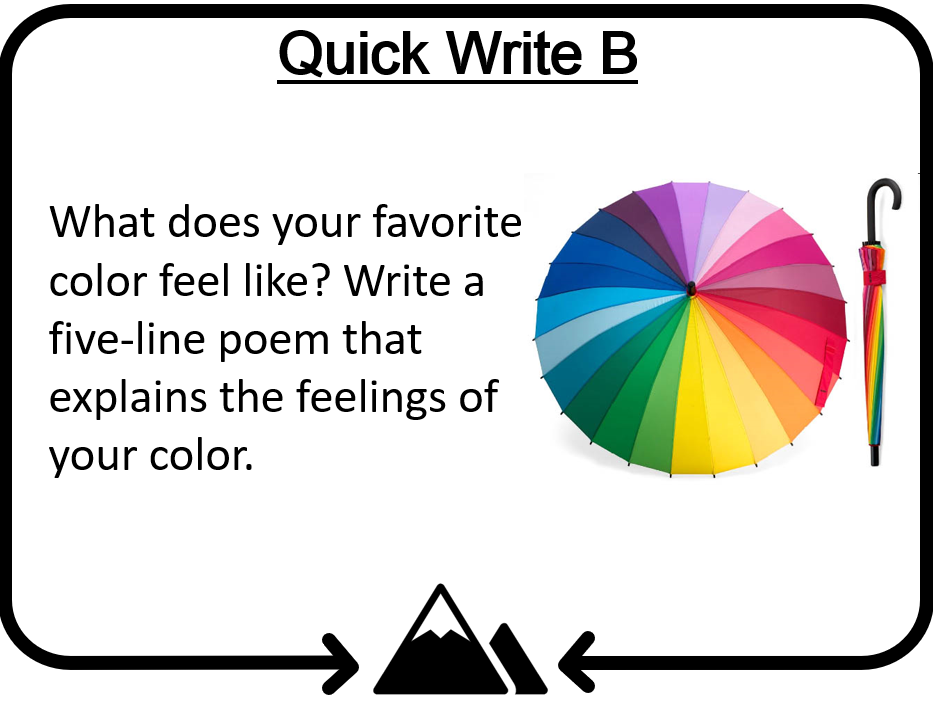
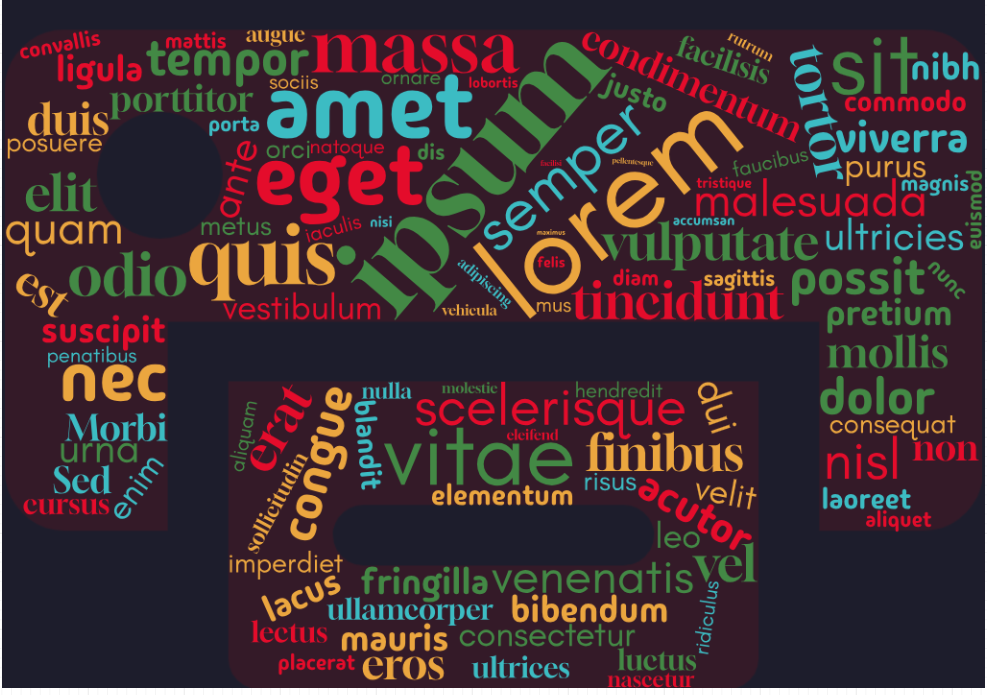

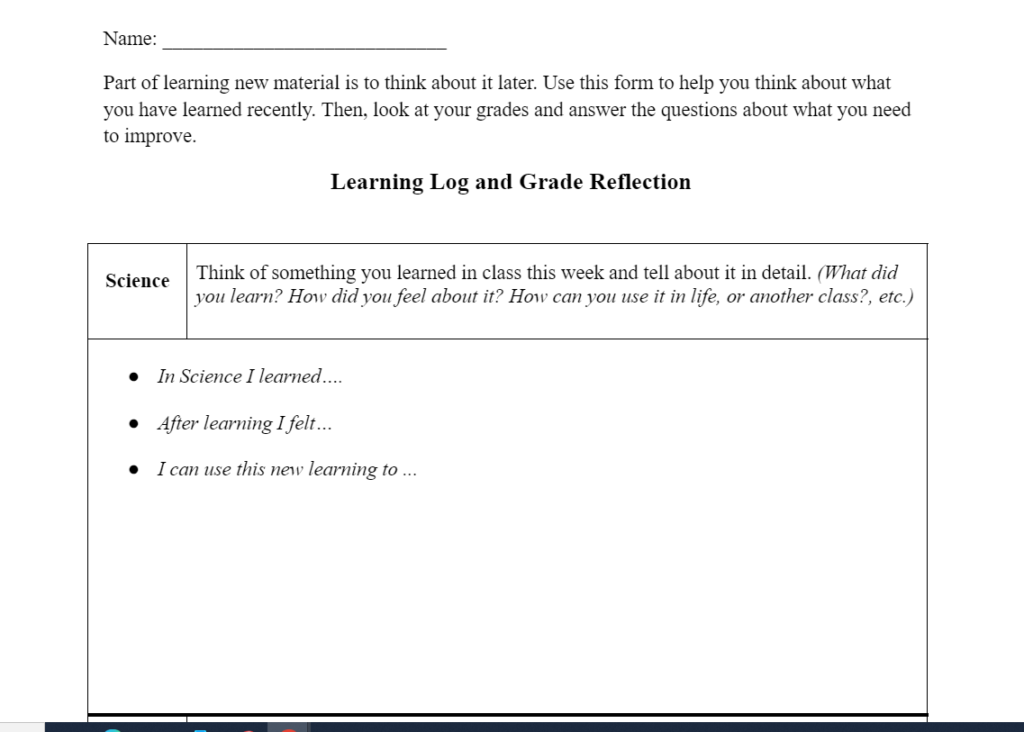
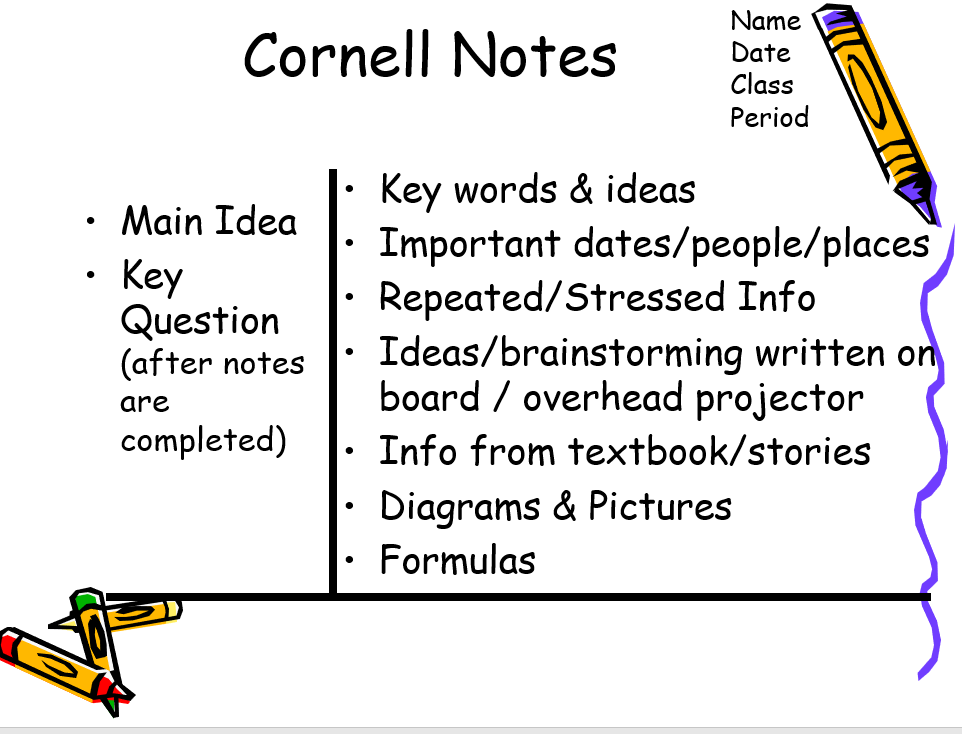
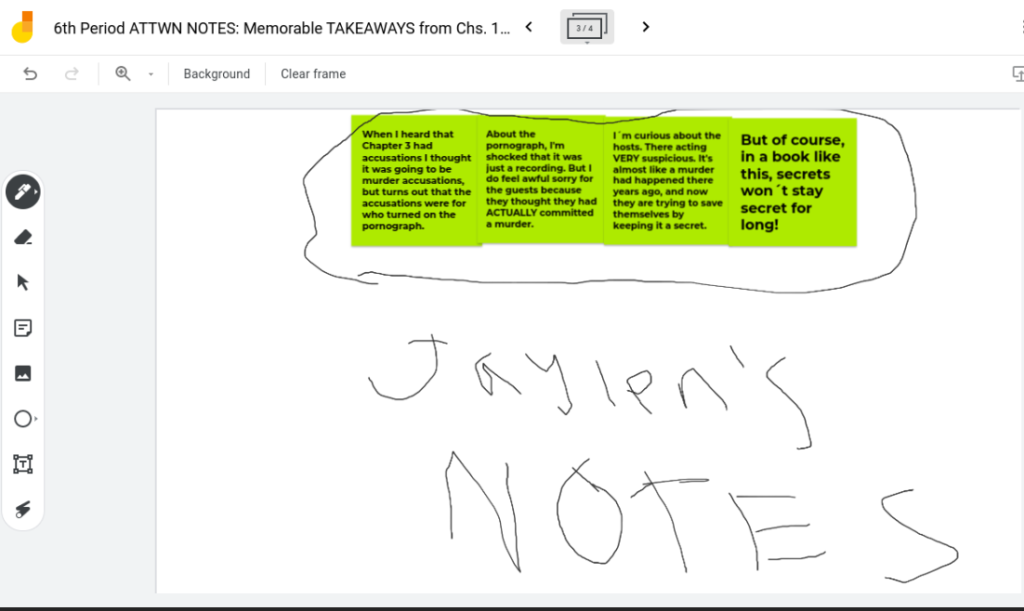
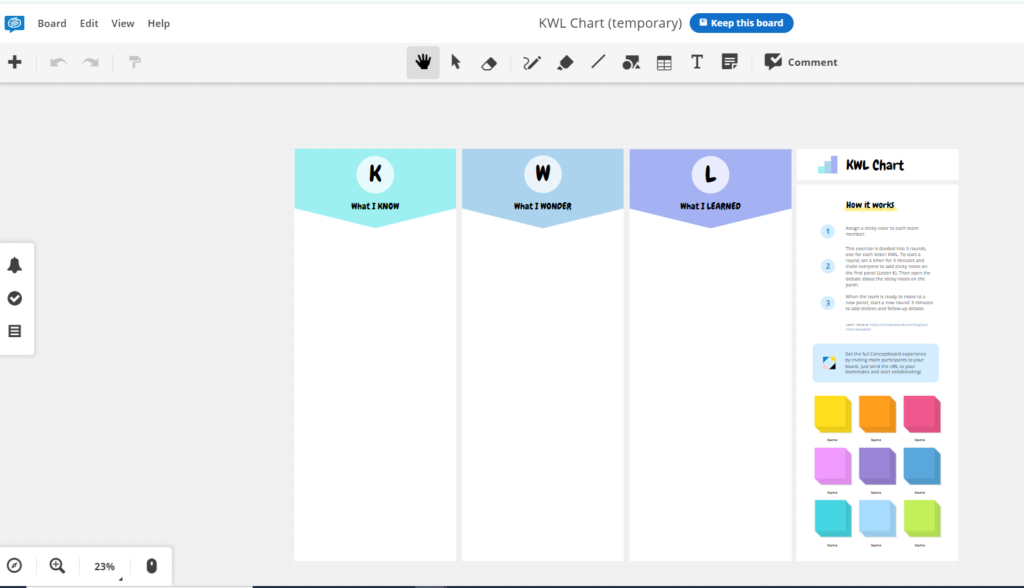








Leave a Reply
You must be logged in to post a comment.